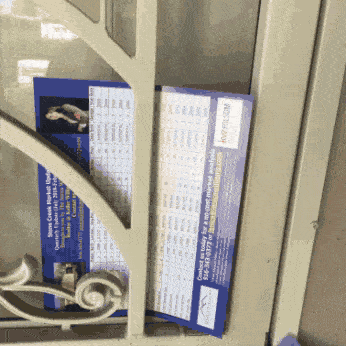[ad_1]
By Marlissa Collier | Dallas Weekly Magazine
A little less than a month before Super Tuesday 2024, Texas’s Secretary of State Jane Nelson would boast that the lone-star state had 17.9 million registered voters – an impressive count given that as of November 2023, the state was home to approximately 21.9 million eligible individuals of voting age. In fact, according to the Secretary of State, in November 2023 it was estimated that about 81% of Texas’s voting age population was registered and officially able to take part in the democratic privilege and civic duty. Understandably impressed with the state’s registration counts, the seemingly excited Ms. Nelson would go on to put out a series of stirring public memos and press releases ahead of Super Tuesday. These memos and PR drops would range in purpose from highlighting the state’s voter registration counts to the Secretary penning a list of “primary election day reminders” to the 17.9 million registered Texans. The reminders reiterated to voters the power of the primaries, election day logistics and the acceptable forms of photo ID, which, of course, include a Texas Handgun License (because this is Texas).
Things were looking great for Texas as Super Tuesday approached. With 81% of the state’s eligible voting block registered and Texas’s political climate so polarized, serving almost as the unofficial microcosm of the nation’s growing culture-war, the people seemed, at least on paper, engaged and ready to use their stylus pens and mail-in ballots to make their preferences known. Upon approach, elected officials, incumbents, hopeful challengers, political analysts and policy influencers would all use their respective platforms to engage Texans, urging them to take part in the weeding out of their party’s candidates via early voting and “on the day of” voting.
But, early voting, along with the Super Tuesday would come and go. In true Texas fashion, where voter turnout has been and remains down-right abysmal, of the afore-boasted 17.9 million registered voters, only 3.2 million, or about 18% would actually turn out for what will arguably go down in history as one of the most impactful primaries of a generation. The 2024 figure sadly meant that almost a million fewer people voted in the 2024 primary than did in 2020. Down from the 4.1 million Texans who participated in the 2020 primaries, Democratic turnout accounted entirely for the decline in civic practice. According to the Secretary of State, 2.3 million Texas Republicans participated in the primaries while Democrats didn’t come close, casting about 975,000 ballots all together.
Though this isn’t a Texas problem at all. It’s very much a United States issue. In fact, according to the Pew Research Center, even with the 2018, 2020, and 2022 elections taking their respective places on the imaginary podium for high-turnout elections, about 66% of the voting-eligible population turned out for the 2020 presidential election, while 46% turned out for the 2022 midterms and 49% voted in the 2018 midterms. Not bad for general and midterm elections. Primaries, though, are a different story. According to a report released in March 2023 by Bipartisan Policy Center, 2022 Primary Turnout: Trends and Lessons for Boosting Participation, in the 2022 primaries, only 21.3% of all eligible voters turned out. That figure was up from 19.9% in 2019 and 14.3% in 2014. This means that even in 2022’s midterm primaries, which was one of the most voted-in midterm primaries, still nearly four out of five voters did not participate in choosing the nominees for the midterm elections that year.
This American phenomenon went on to track with the overall Texas and narrowed-in Dallas primary turnouts. On Super Tuesday 2024, Dallas would go on to fall right in line with Big Tex, keeping with its historically low voter turnout. According to the Dallas County Elections Department, of Dallas County’s 1.4 million registered voters, as of January 2024, just 7.39% or 105,193 Republican voters cast ballots. Meanwhile, 125,562 or 8.82% of Democratic voters participated, for a total of 16.2% voter turnout. This means that in Dallas, just 16 out of every 100 eligible and registered voters had a say in which candidates would end up on their general election ballot in November, while across the state, less than 18 out of every 100 eligible and registered voters would show up to have a say.
For Democratic and Republican voters alike, across Dallas, Texas, and the greater U.S., the lack of voter participation in primary elections means giving the power of deciding who will end up on the November ballot over to the handful of civically engaged citizens. This year, during what is certain to be one of the most contentious elections in the history of our nation, 18 Texans decided for every 100 Texans, while 16 Dallasites made these decisions for every 100 eligible and registered voters – who went through the trouble of registration, and all that means in the state of Texas – only not to participate.
Not only does the primary election serve as the mechanism for allocating delegates to presidential nominee hopefuls, it also weeds out candidates for roles that are much closer to the everyday lives of Texans. From candidates seeking seats in the U.S. and Texas House and Senate, and the commissioners who have the power to regulate industries, to members of the State Board of Education, Texas Supreme Court justices and judges. These people have the power to impact the everyday lives of Texans, from a child’s education to penning policy that will either allow or ban a manufacturer from building an air-polluting, asthma causing plant right across the street from a residential neighborhood. For Dallas residents, it’s probably worth not only knowing who’s on the ballot, but also using your civic power to decide who makes it there come November.
Post Views: 34
[ad_2]
Source link










